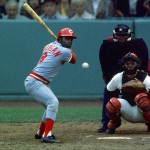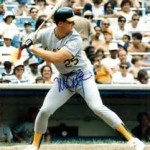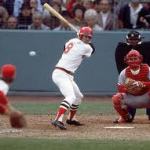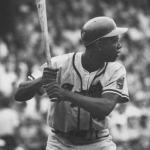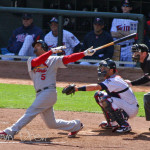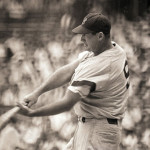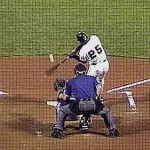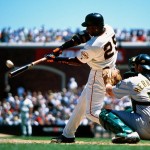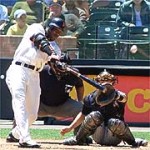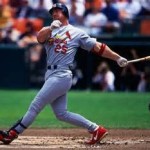Part IV – Conclusion!
In conclusion, I would submit that the physical prowess of today’s athletic baseball players is far beyond that of the past. The pitchers are bigger, stronger, and have more of a vast assortment of training procedures and deceptive pitching techniques (as well as scouting reports) than their forebears. And the batters, while seemingly disenfranchised by this fact, are themselves equal in physical stature and have access to training techniques to potentially offset that superior Pitching preponderance. Every player dreams or fantasizes about getting a hit every time he comes to the plate, and even wonders, in dismay, why it is that he cannot fulfill his dream. Futility leads to hopelessness, and thus creates the enduring saga of the .250 hitter, or less. If Einstein was correct when he said, “Imagination is more important than knowledge”, then let every batter begin his quest for “perfection” in his own hope-filled mind, and imagine for himself how to pursue his daunting quest by the practice of a principle most likely to develop faith in his assured success. How and where to begin?:
Description: Ultimate Dimension—In the realm of mortal consciousness this dimension is
non-existent. It only exists in the hopes and dreams of those whose childlike rebuke of the cold conventionality of human imperfection would stand in defiance to the claims of those stagnant horizons of self-imposed status-quo. As the image and likeness of something greater than a vain-glorious adulation of individual self-aggrandizement, he that would be capable of climbing toward the supreme heights of ultimate bats-man-ship is one who is least fraught with a limiting sense of personal prowess. Anyone aspiring to a Self-recognizable commitment to nothing less than a Perfect Principle has the only hope of attaining the grandest height of proficiency, for himself and those who would follow his example.
To “believe assuredly” is to have absolute faith in a proven principle. On the human level it’s hard to find an “Absolute” from which to have an absolute-faith. The True-Self consciousness, in all of us, can discern the correct path to take, the right doctrine to espouse, and the most plausibly scientific way to hit a baseball. Could anyone besides a “Jesus” bat 1.000?
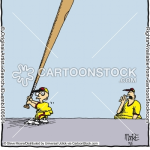
Description: Penultimate Dimension—This chrysalis state from which an earnest achiever
would merge into the ultimate of highest batting proficiency is obviously the closest step to perfection. If batting perfection is impossible on the human level, then would it not behoove any semblance of mankind to strive for a suitable facsimile thereof, to a level as close as possible to that ideal, instead of stagnating at the miry depth of conformity to the sub-.400 range of hitting. If all those reading this paper were in agreement with a collective goal of developing the highest possible batting proficiency at this level, then where must we begin to explore this nebulous realm of Penultimate dimension?
Taking the advice of Aristotle and the inspired Scribe of Psalms, is it possible to extrapolate, from the collective archival achievements of Baseball’s most formidable hitters, a hint of productive principle from which to glean a promising standard for enhanced batting proficiency?
Thoughtful consideration of a good many aspects of the entire batting regimen must be
understood and applied conscientiously, in order for maximum proficiency to be demonstrated. The question has been, and might always persist. What is the proper regimen for establishing a technique that will procure the consistent, maximum effect while hitting a baseball? Many have theorized about the prospect, but only a handful have established credibility through their practical applications. But, of these, the closest to extracting a complete and understandable facsimile of truth has been Mr. Ted Williams, who happened to be the last Major League player to bat .400 over the course of an entire season.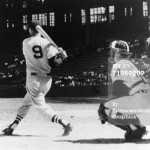
Although Mr. Williams was nearly perfect in his understanding and application of the
principles governing the absolute definition of batting prominence, he was not altogether
un-flawed in his actual approach to its impeccable demonstration. The closest exponent of the perfect batting technique was/is Barry Bonds. He, in obvious ways, supersedes the brilliance that Ted Williams embodied. 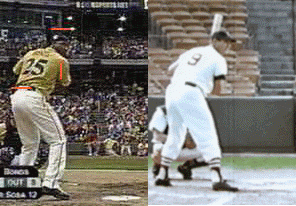 (The only thing difficult to decipher was whether or not he was conscious of his pre-eminent status as a pure extrapolation of principle. Or was he subject to faltering, due to his misrepresentation of the “Power-Principle” with an unsuitable penchant for the illusory enhancement of chemically induced stimulation?)
(The only thing difficult to decipher was whether or not he was conscious of his pre-eminent status as a pure extrapolation of principle. Or was he subject to faltering, due to his misrepresentation of the “Power-Principle” with an unsuitable penchant for the illusory enhancement of chemically induced stimulation?)
Barry Bonds was capable of hitting in excess of 100 home runs per season, and batting .400 or more, because he was closer to flawless technique than anyone who has ever played the game. His strength was/is incontestable, his athletic ability was indisputable, his timing impeccable, and his stance, approach to the ball, and fluid mechanics were incomparable. In the few areas in which Ted Williams was lacking, Mr. Bonds was prolific. His only slight deficiency seemed to be in the realm of the mental accountability, which manifested itself physically at certain, momentary slumps.
What was it that Barry Bonds did consistently right, that most, if not all, other batters only
do sporadically? The answer is 5 separate things. They are the following:
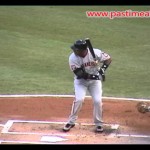
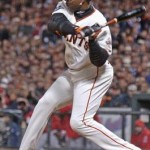
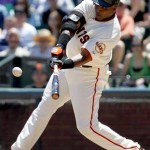
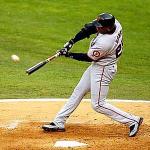
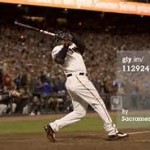
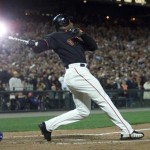
1. He established a strong low center of gravity within his stance.
2. He eliminated the movement of his head and eyes as he strode (very slightly).
3. He waited patiently for the ball to get to him.
4. When the ball got to his hitting zone, 4 things happened simultaneously:
a. The front foot planted quickly and firmly. Front leg began to straighten.
b. Front shoulder shrugged upward, while back elbow drove downward to flatten bat.
c. Back bent knee drove forward, as hips turned rapidly and front leg straightened.
d. The shoulders followed the hips in rapid succession, with hands and bat still behind back shoulder until arms extended through the contact with the ball.
5. From contact, through the straightening of arms, through the follow-through, the
shoulders were continuously flowing, until they (shoulders) had changed position.
Consistency in Batting effectiveness (Home Run proficiency) had never been more highly
demonstrated than by Barry Bonds in the 2001 season, when he set what seems an insurmountable record, for anyone but Barry Bonds himself. And, in 2002, he won his first (of what should have been many) “Batting Crown”. His extra power had catapulted him to a higher level than had been previously thought possible. When he wasn’t quite so strong, his drives were careening off the walls instead of sailing over the fences. Is there anyone else smart enough to figure out how to duplicate his technique? “Truth is revealed! It needs only to be practiced.”—M.B. E.
A few batters who have emerged since the Bonds era ended, who seem to have attained the most essential characteristics necessary to continue the proliferation of Batting Excellence, are Miguel Cabrerra and Chris Davis. 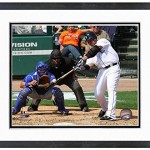
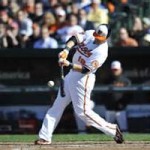 Cabrera’s consistency ranks him higher on that elite list than Davis at this point in their respective careers. Even with his “Triple-Crown” prowess and multiple MVP awards, Miguel has one particular flaw that, if corrected, could garner for him the highest tier in the hierarchy of Batting grandeur. That “flaw” is his “high-leg-kick” to initiate his approach to his “launch-position”
Cabrera’s consistency ranks him higher on that elite list than Davis at this point in their respective careers. Even with his “Triple-Crown” prowess and multiple MVP awards, Miguel has one particular flaw that, if corrected, could garner for him the highest tier in the hierarchy of Batting grandeur. That “flaw” is his “high-leg-kick” to initiate his approach to his “launch-position”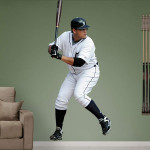
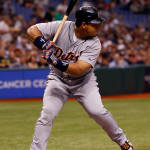 . Like other “H. L. Kickers”,
. Like other “H. L. Kickers”,  that front foot, while in “suspended-animation” is subject to inconsistent “planting” that is the most crucial element necessary in initiating the swing. If “timing” isn’t perfect, such batter is either Late, or Early with the “plant”. When asked how he manages his ability to get out of momentary slumps, he offered the following statement, “I just don’t stride with my front foot, and it works itself out”. Duh! That’s the secret to the natural success that anyone would experience. So why doesn’t he do that all the time?
that front foot, while in “suspended-animation” is subject to inconsistent “planting” that is the most crucial element necessary in initiating the swing. If “timing” isn’t perfect, such batter is either Late, or Early with the “plant”. When asked how he manages his ability to get out of momentary slumps, he offered the following statement, “I just don’t stride with my front foot, and it works itself out”. Duh! That’s the secret to the natural success that anyone would experience. So why doesn’t he do that all the time?
The most noticeable flaw that keeps Chris Davis from performing at his optimal level is his “Shawn Green”, Tall, Open, High-Bat stance  . But from there he moves into a position of utmost advantage
. But from there he moves into a position of utmost advantage 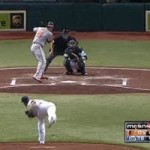 .
.
If Chris Davis would start from this position  , but avoid the stride completely, he would be more ready for any pitch thrown to him. Then he would simply plant his front foot, and let the rest of his swing occur in its otherwise majestic sequence.
, but avoid the stride completely, he would be more ready for any pitch thrown to him. Then he would simply plant his front foot, and let the rest of his swing occur in its otherwise majestic sequence. 


 With his natural power ( not needing to be steroid enhanced) Chris is the front-runner to legitimately replicate the Bonds’ mystique and carve out a niche in Baseball’s legendary “Hall of Heroes”. But only if he changes his false-impression of “proper hitting technique”! He must incorporate a new stance, and approach to the ball with thought-processes and actions of the scientific application of the proper batting mechanics practiced most consistently by Barry, and Mark McGwire (the vanguard to such scientific-artistry being attributable to Ted Williams
With his natural power ( not needing to be steroid enhanced) Chris is the front-runner to legitimately replicate the Bonds’ mystique and carve out a niche in Baseball’s legendary “Hall of Heroes”. But only if he changes his false-impression of “proper hitting technique”! He must incorporate a new stance, and approach to the ball with thought-processes and actions of the scientific application of the proper batting mechanics practiced most consistently by Barry, and Mark McGwire (the vanguard to such scientific-artistry being attributable to Ted Williams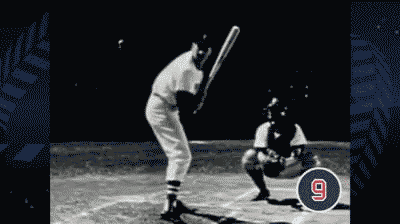 ).
).
